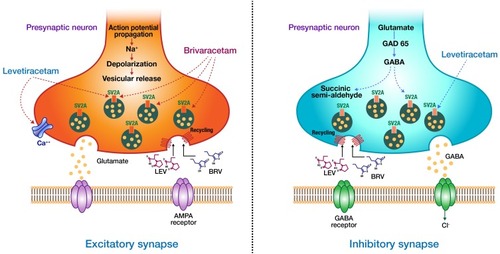Figures & data
Table 1 The pharmacokinetic properties of brivaracetam in comparison to levetiracetam
Figure 1 Proposed mechanism of action of brivaracetam (BRV) and levetiracetam (LEV). BRV and LEV bind to the human SV2A protein at closely related sites. BRV has a 15–30-fold higher binding affinity than LEV. Unlike LEV, BRV does not Inhibit high-voltage-gated calcium currents or modulate inhibitory or excitatory postsynaptic ligand-gated receptors at therapeutic brain concentrations.

Table 2 Summary of efficacy outcomes from the six regulatory RCTs of brivaracetam as adjunctive therapy in adult patient with drug-resistant seizures
Table 3 Rate of TEAEs (%) reported by ≥5% of patients in any treatment group in the six regulatory RCTs of brivaracetam
Table 4 Comparisons of pharmacological properties of brivaracetam and levetiracetam
